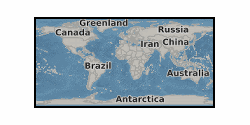.xls
Type of resources
Topics
Keywords
Contact for the resource
Provided by
Years
Formats
Update frequencies
-

Controlled CO2 release experiments and studies of natural CO2 seeps have been undertaken at sites across the globe for CCS applications. The scientific motivation, experimental design, baseline assessment and CO2 detection and monitoring equipment deployed vary significantly between these study sites, addressing questions including impacts on benthic communities, testing of novel monitoring technologies, quantifying seep formation/style and determining CO2 flux rates. A review and synthesis of these sites studied for CCS will provide valuable information to: i. Enable the design of effective monitoring and survey strategies ii. Identify realistic site-specific environmental and ecosystem impact scenarios iii. Rationalise regulatory definitions with what is scientifically likely or achievable iv. Guide novel future scientific studies at natural or artificial release sites. Two global databases were constructed in Spring 2013, informed by a wide literature review and, where appropriate, contact with the research project leader. i. Artificial CO2 release sites ii. Natural CO2 seeps studied for CCS purposes The location and select information from each of these datasets are intended to be displayed as separate GoogleMap files which can be embedded in the QICS or UKCCSRC web server. These databases are not expected to be complete. Information should be added as more publications or become available or more case studies emerge or are set up. To facilitate this process, a contact email should be included beneath the map to allow viewers to recommend new or overlooked study sites for the dataset. Grant number: UKCCSRC-C1-31. These data are currently restricted.
 NERC Data Catalogue Service
NERC Data Catalogue Service